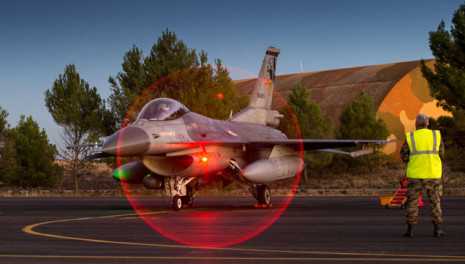On the wings of Trident Juncture 2015
Szöveg: honvedelem.hu / nato.int | 2015. november 5. 9:00Air crews from Allied and partner nations are training to improve their readiness and ability to work together and interact with land and naval forces during NATO’s Trident Juncture 2015 exercise.

More than 160 aircraft including fighter jets, refueling tankers, transport aircraft, helicopters, surveillance planes and drones are training in the exercise, operating from 15 air bases in Italy, Spain, and Portugal, the three Allies hosting Trident Juncture.
Sixteen Allies and three partner nations have sent crews and aircraft to participate in the military exercise, which began on 19 October. Joint air operations focus on various types of missions, including training for defensive and offensive air operations and practicing air-to-air refueling, combat search and rescue, air support for land and naval forces, and tactical air transport operations. “From 21 to 28 October there have been nearly 340 flights out of Beja supporting air operations within Portugal including Portuguese Air Force F-16s, providing simulated enemy air assets out of Monte Real, and AWACS (surveillance) support received from Torrejon, Spain," said Hellenic Air Force Colonel Georgios Giapitzis, head of the Local Operations Control at Beja, Portugal during Trident Juncture.
Trident Juncture is the Alliance’s biggest and most ambitious exercise in more than a decade. More than 30 nations are taking part, including 36,000 troops at sea, on the ground and in the air. In preparation, the host nations, troop contributing nations and the organising NATO commands coordinated closely with civilian air traffic control counterparts including EUROCONTROL, the European Organisation for the Safety of Air Navigation, to ensure the safe use and management of airspace during Trident Juncture.
The air component of Exercise Trident Juncture 2015 is being directed by NATO’s Allied Air Command in Ramstein, Germany. Tactical air operations are controlled by the Italian Joint Force Air Component at Poggio Renatico in Northern Italy. They coordinate closely with local operations control units at Trapani in Italy, Albacete in Spain and Beja in Portugal as well as with host nations and troop contributing nations.